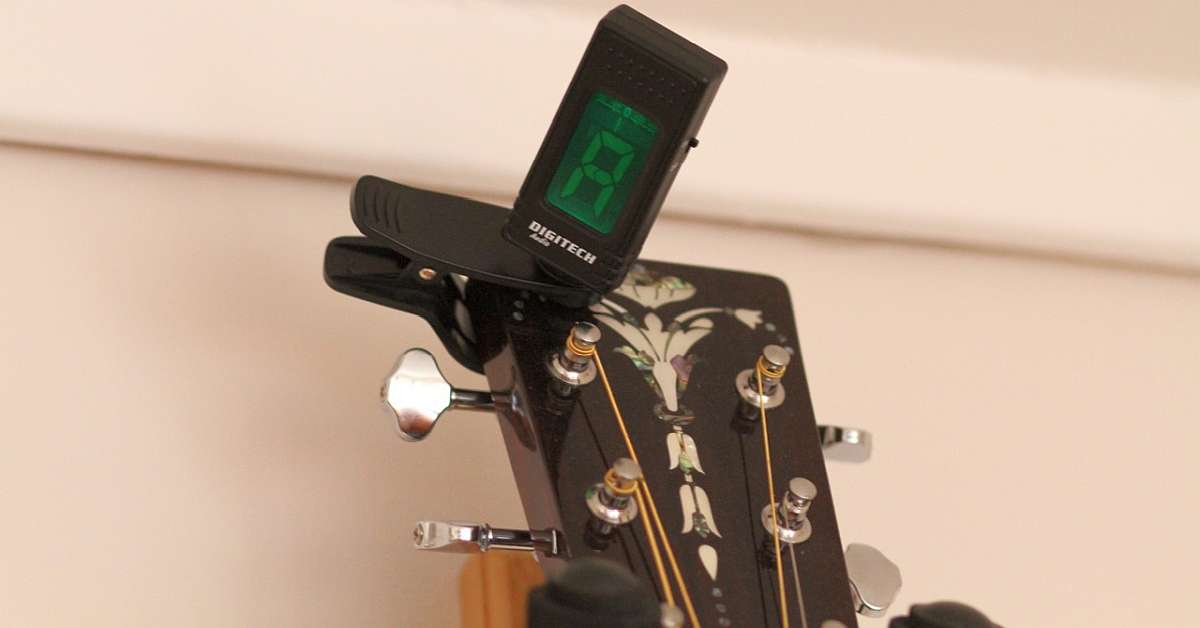Here is how DADGAD tuning differs from standard tuning, and how you can use it to create breathtaking music.
If you're interested in adding a folk or celtic sound to your guitar playing, you have probably come across DADGAD tuning.
Although DADGAD tuning is traditionally associated with fingerstyle guitarists who play Celtic music, such as Tony McManus and Stephen Wake, you can use DADGAD tuning to play a vast range of fingerstyle songs.
Let's explore how to play fingerstyle guitar in DADGAD tuning, starting with the chords and learning an arrangement of a Celtic tune.
This article contains affiliate links. When you purchase using an affiliate link, I may earn a small commission without any extra cost to you.
- What Is DADGAD Tuning?
- What Are The Notes in DADGAD Tuning?
- How to Tune Into DADGAD With A Guitar Tuner
What Is DADGAD Tuning?
DADGAD tuning is an alternate guitar tuning where the strings are tuned to the notes D2, A2, D3, G3, A3 and D4 (low to high). The numbers next to the note names indicate which specific range, or octave, the notes belong to.
Is DADGAD An Open Tuning?
DADGAD tuning is almost, but not quite, an open tuning. Playing all of the strings on the guitar in DADGAD tuning does not produce a major or minor chord, because of the G string.
DADGAD tuning is a logical tuning to use after mastering Drop D tuning. It is almost, but not quite, an open tuning. There are many beautiful fingerstyle songs you can play using this tuning. You can play very easy chords all across the guitar neck. However, playing open strings on the guitar in this tuning doesn't give you a major or minor chord.
In contrast, the Open D tuning produces a D major chord when strumming all the strings, because the third string is tuned to F sharp.
Nevertheless, you can take advantage of some really easy chord shapes using this tuning, much like you would any open tuning.
What Are The Notes in DADGAD Tuning?
In this tuning, the strings are tuned to the following pitches, from lowest to highest: D, A, D, G, A, D.
We can show the tuning visually using standard musical notation, where the notes are placed on a staff in the traditional format that musicians read.
Here is what that looks like in standard notation, which accurately displays the height of each pitch:

The online course Play Fingerstyle Guitar Now! will show you some secrets to easily read and understand guitar notation, such as the one above.
How to Tune Into DADGAD With A Guitar Tuner
If your guitar is in standard tuning, there are three strings that you will need to tune differently. Before changing anything, first make sure your guitar is tuned correctly in standard tuning. Set your tuner to "Guitar", and tune each string of your guitar correctly.
Next, switch your guitar tuner from "Guitar" to "Chromatic". Then follow the following steps as you carefully loosen the sixth, second and first strings to the correct notes.
- String 1 (high E) tune down to D
- String 2 (B): tune down to A
- String 3 (G): Stays the same
- String 4 (D): Stays the same
- String 5 (A): Stays the same
- String 6 (low E): tune down to D
How To Tune to DADGAD by Ear
The method to tune DADGAD tuning by ear involves changing to Drop D tuning, then tuning the first and second strings to other open strings on the guitar. There is no change for the A, D, and G strings.
Now that you have successfully dropped the sixth string from E to D, it’s time to do the same with the first string: it also needs to drop from E to D. Play the sixth and fourth strings simultaneously as you loosen or "drop" the first string, in order to precisely tune all three strings to the same note “d”.
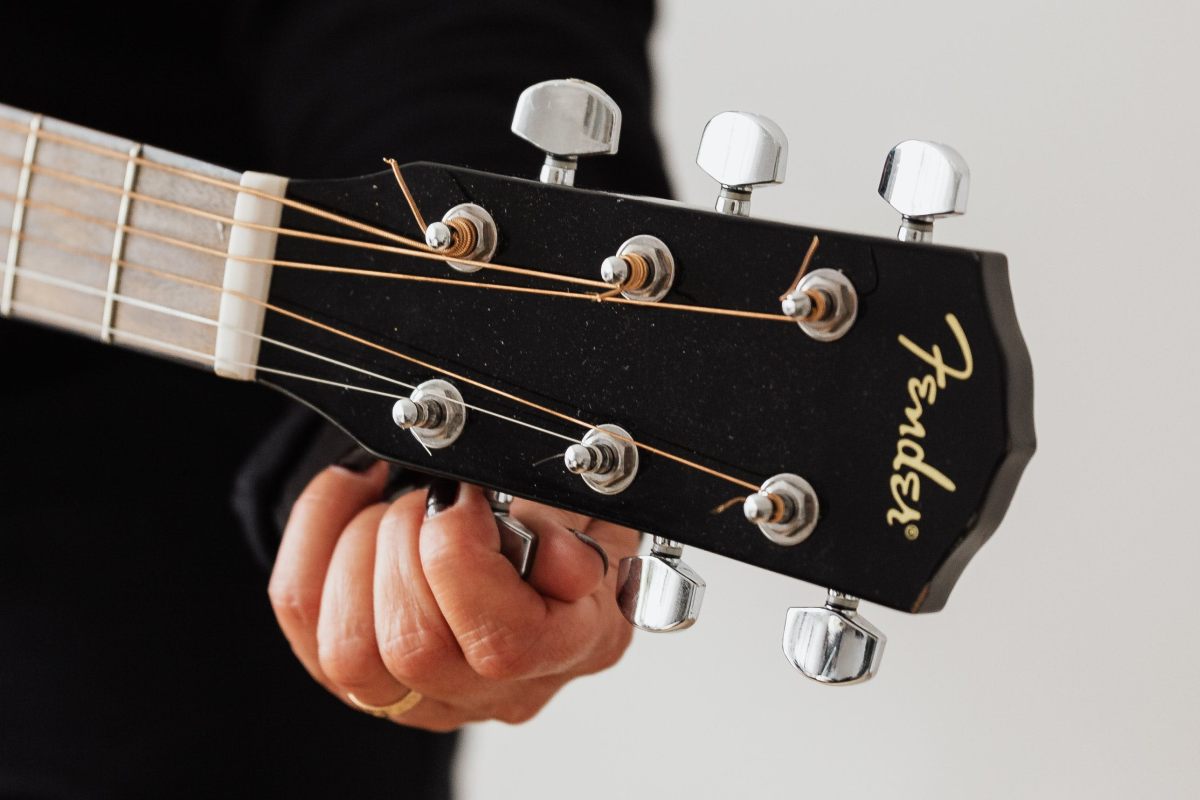
Finally we must tune the B string down to "A". Again, loosening the strings the whole time, drop the B string down to A while playing the fifth string and listening for the beats.
The beats should slow down and finally disappear when the second string is precisely tuned to the note A.
You can check that your guitar is properly tuned by playing some of the chords that you'll learn below.
Beautiful Chords in DADGAD Tuning
To get started using DADGAD tuning, we first need to learn the basic building blocks, or chords, that you can use in DADGAD tuning.
Almost all of your chords that you play in DADGAD will involve drone tones. As a fingerstyle guitarist, you can choose to pluck these or leave them out in your arrangement.
The Most Beautiful DADGAD Chord: Dmaj7
Let's start by playing the most beautiful chord in DADGAD tuning, the D Major 7 chord (Dmaj7).
The idea is to take Artie Traum's advice and use our pinky finger whenever possible in DADGAD.
First, let's place our fingers to form a regular D major chord. Place your third finger on the fourth string fourth fret, and your first finger on the third string second fret.
Finally, add a dissonance: place your fourth finger on the second string fourth fret, on the note C Sharp.
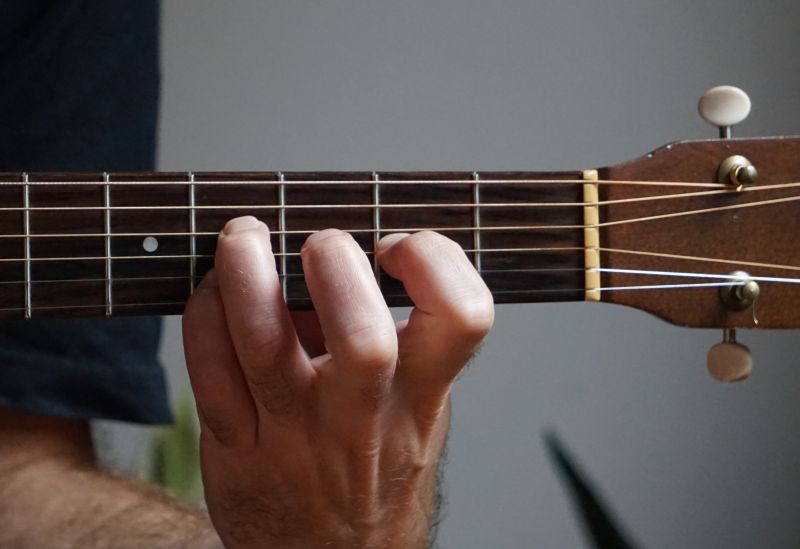
Dissonance here refers to adding a note that clashes slightly with the harmony of the D major chord, but in a way that adds color and depth to the sound, rather than sounding out of place.
The G Major Chord in DADGAD
Another beautiful DADGAD chord is the G Major chord with an added sharp 4, which you can descend to the third. This is a chord that Sungha Jung is particularly fond of.
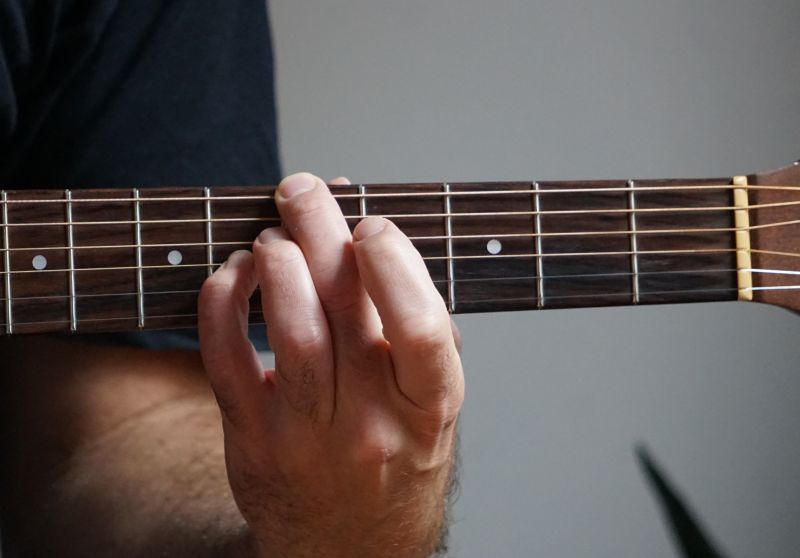
If you play this chord immediately after D Major 7, the C sharp acts like a drone note: a common note between the two chords that sounds dissonant on its own.
The Line Chord
Perhaps the most common and useful chord is what I call the "Line chord". Sungha Jung makes good use of this simple chord shape that you can move up and down the fretboard.
The Line Chord involves placing a second finger on the fundamental note, then stopping or blocking the other strings with the other fingers of the fretting hand.
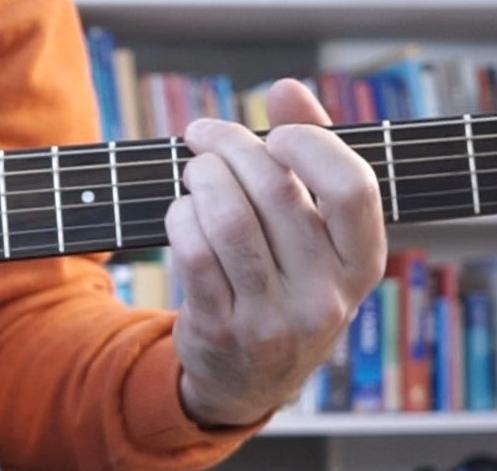
To produce a G chord in the fifth fret using the line shape, the second finger goes on the sixth string, the third finger on the fourth string and the pinky finger on the second string.
The E Minor Seventh Chord in DADGAD
Another beautiful line chord in the second fret produces the E minor 7 chord. This chord contains the notes E, G, B and D - the latter note being supplied by the first string open.
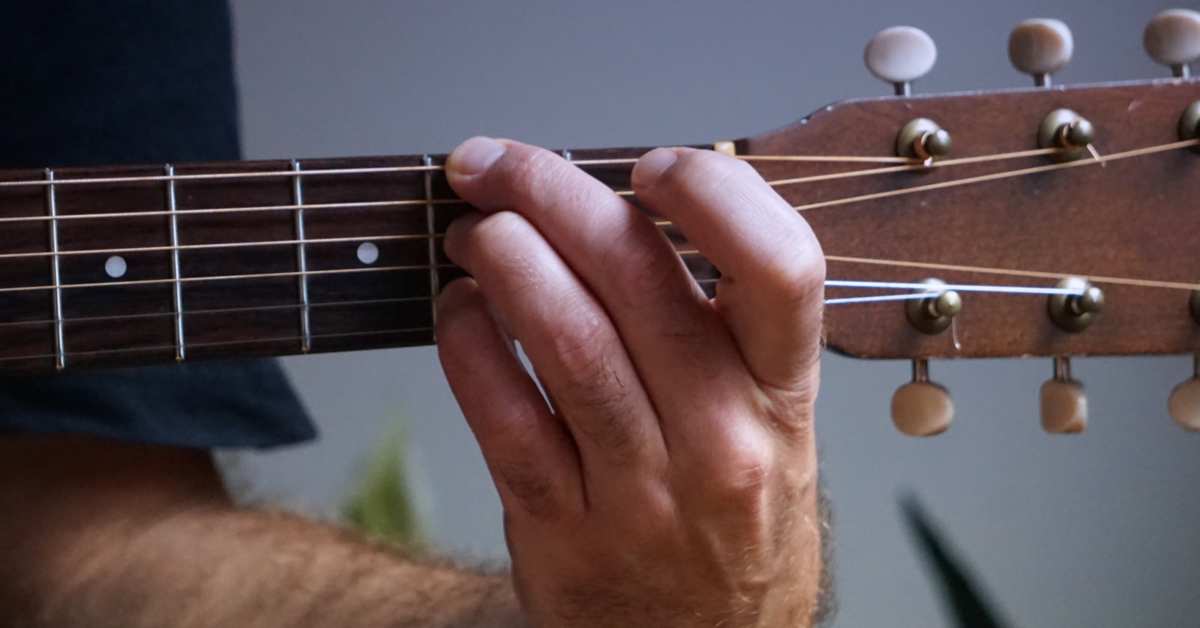
To play Em7 in DADGAD, place the second finger on the sixth string, the third finger on the third string and the fourth finger on the second string, all in the second fret.
You will need to mute the fifth string if you don't want a drone note to sound. Or just leave it out when you are plucking.
What Are Some Fingerstyle Songs In DADGAD Tuning?
If you are getting started, I recommend learning Celtic tunes in DADGAD tuning. They lend themselves especially well to this tuning because of the use of open strings.
Here's an arrangement that I made of a traditional Irish tune called Banish Misfortune.
To make this arrangement, I started first by figuring out how to play the melody. You'll notice that there are quite a bit of legato notes.
Next, I added bass notes on the strong beats. Finally I added strummed D chords at the beginning of the sections.
If you want the tablature to this arrangement, check out the tabs section here.
If you want to learn some other songs in DADGAD tuning that aren't necessarily Celtic, check out the list below.
- Sprint by Sungha Jung - This song from Sungha Jung's album Monologue makes heavy use of strumming DADGAD chords.
- Hajimari by Masaake Kishibi - This fingerstyle song by one of Japan's foremost finger picking guitarists uses a capo on the third fret, bringing the guitar into F.
- Photograph (Ed Sheeran) - This is my arrangement for fingerstyle guitar that was inspired by James Bartholomew. If you want the free PDF Tab to download, check out the video description by clicking on the link.
Pros of DADGAD Tuning
Playing Celtic and Folk Music
DADGAD tuning is perfect for playing songs which are in D Major. Many popular folk or "fiddle" tunes are in this key. However, it is not practical if you want to modulate into different keys, or play in higher positions on the guitar.
Drone Tones
By playing simple DADGAD chords, you can take advantage of drone notes or drone tones. These are open strings which are continuously repeated or sustained even when they don't form part of the chord.
The bagpipe, an instrument closely associated with music from Scotland and Ireland, contains drone pipes. These are tubes that sound the same note constantly, regardless of the melody.
You can use one of the D strings in DADGAD tuning to sound the drone notes in your arrangement, like the bagpipe. This is one way that DADGAD tuning has a Celtic sound.
No dissonant notes
The point of DADGAD tuning is to take advantage of the drone notes caused by open stringsThe dissonances caused by the closely spaced intervals between your fretted note and the open string is a feature of DADGAD tuning, not a bug.
Relatively Easy Chords
DADGAD tuning also lets you play relatively easy chords, especially in the key of D major. The simplest chord in DADGAD tuning is the D chord. Place a finger on the fourth string, fourth fret and on the third string, second fret to produce the D major chord.
Cons of DADGAD Tuning
Difficult To Play In Different Keys
Although you can play beautiful chords mostly due to the unique sound of drone notes, DADGAD tuning is only really suitable for playing in the key of D. If you want to play in another key with DADGAD tuning, you will need to use a capo.If you would like to use DADGAD tuning but have your guitar sound in another key, you will have to use a guitar capo.
Cramped Chord Shapes
Unfortunately, chords such as the line chord become cramped in higher positions. This is made worse when you use a capo, owing to the smaller distance between the frets.
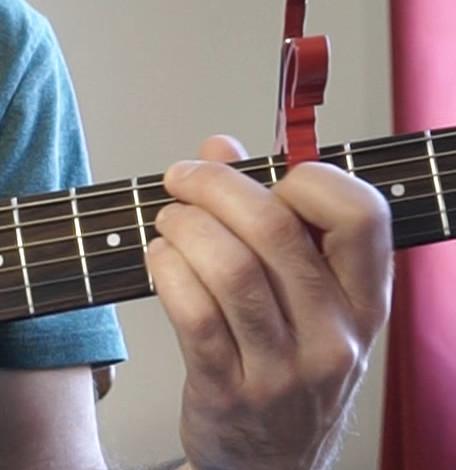
True Major Chords Besides D Are Hard
If you want to play true major chords without any dissonance in DADGAD tuning, some of them are much harder than in standard tuning.
For instance, the G major chord, without any dissonance or drone tones, you need to make a wide stretch between frets. Furthermore the hand shape is "inverted".
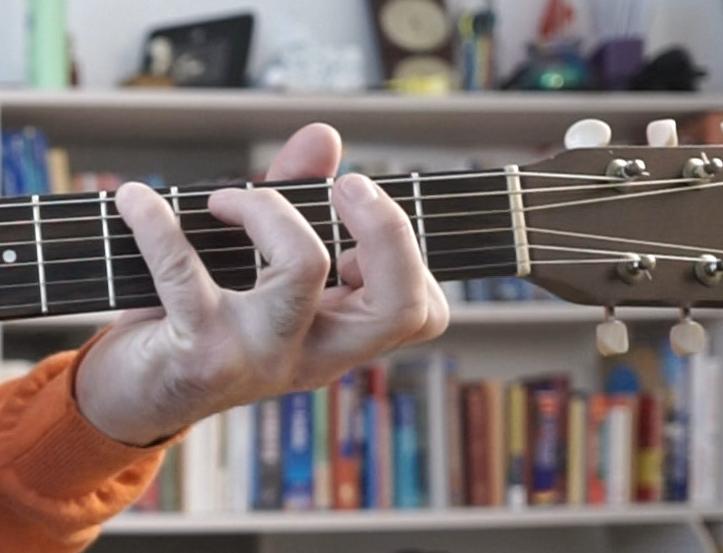
To play the pure G major chord in DADGAD tuning, place your pinky finger on the sixth string at the fifth fret, on the note G. Then place your first (index) finger on the second string at the second fret, for the note Be aware that most other three note chords have awkward fingerings like this.
Is It Safe To Leave Your Guitar In DADGAD Tuning?
If you are practicing songs in DADGAD tuning on a regular basis, such as “Sprint” by Sungha Jung, then it is perfectly fine to leave your guitar in DADGAD tuning.
However, if you find yourself switching between DADGAD and standard tuning on a regular basis, consider getting two instruments and leaving one guitar in DADGAD tuning and another in standard tuning, to avoid constantly having to change tunings.
If you are new to fingerstyle guitar, I recommend starting out with standard tuning first, and following an online course such as Play Fingerstyle Guitar Now! before tackling more advanced songs in alternate tunings.

